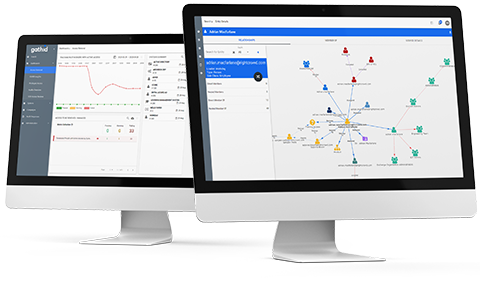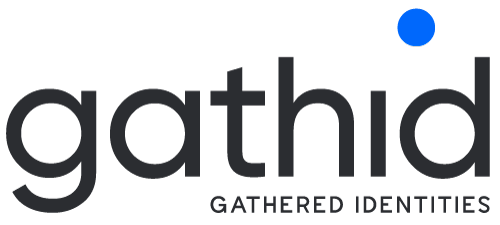When considering the most effective approach to managing user identities and access rights, the increasing complexity and overheads associated with the routinely manual processes organizations have in place present a significant challenge. Failing to properly address what is commonly referred to as identity debt is a leading cause of cybersecurity risk in organizations where high amounts of staff movement, turnover, and restructuring occurs.
What is Identity Debt?
Identity Debt is a broad concept that encompasses aspects of identity management that include user provisioning, de-provisioning, access reviews, auditing, and compliance. It commonly refers to the cumulative effect of improperly managed user identities and their associated access rights over long periods of time, or after large amounts of organizational change.
Identity debt generally includes a combination of components such as outdated user accounts, insufficient or overly lax access levels, incomplete (or completely missing) documentation of user privileges, and incorrectly applied policies – all the way through to the issues that this mismanagement of the overall user identity controls can cause within an organization.
The Accumulation of Identity Debt:
Identity debt occurs in a cumulative manner over time in response to changes in people, process, and technology, and as a result of structural changes within an organization such as mergers and acquisitions, divestments, and rapid growth or downsizing.
In order to identify whether your organization may be at risk due to the buildup of identity debt, the situations outlined in the list below are indicative of a need to uplift your organization’s identity management and governance program:
Legacy / Improperly Offboarded Accounts: Over the years, employees come and go, job roles change, access requirements shift, and legacy applications or infrastructure are forgotten or inadvertently filled with production data.
One only needs to look at the recent issues with Microsoft and the attack from threat actor group Midnight Blizzard to see how these issues can quickly create problems.
Access Creep: Inappropriate access levels result from granting excessive permissions or failing to update access as employees’ roles change. This increases the risk of data breaches from situations such as insider threats, lateral movement into privileged user accounts during an attack, and rogue local admin account creation.
Addressing access creep requires taking cybersecurity approaches back to first principles, ensuring that only those that require access to a system or service have them – and that additional privileges are granted only in line with the organization’s policies and controls.
Those organizations looking to adopt a zero-trust approach to their cybersecurity strategy should be placing addressing access creep near to the top of their action item lists.
Lack of visibility/context: An inadequate understanding of user access and privileges is a primary cause of problems when considering auditing and compliance efforts. Not knowing who has access to what, and what they could do with their access, results in identity security becoming a more complicated task than it needs to be.
Typically, organizations have “gates” such as learning module and training pre-requisites that must be completed prior to a user being provided with access to a system, service, or application. In considering whether policies or controls are actually impactful in terms of reducing risk, managers and administrators must be able to effectively overlay said policies and controls to a visible and correct identity model.
Manual / Inefficient Access Reviews: When considering governance, risk, and compliance, regular user access reviews are a key action item when looking to ensure that users have only the necessary access rights.
In many cases, organizations’ processes for facilitating access reviews involve heavy amounts of manual work across out-of-date spreadsheets which are sent to senior managers – who may or may not have technical understanding of the systems they’re responsible for. Beyond human error due to lack of understanding, staff are often busy with their own priorities and may not always properly conduct these reviews as a result.
Failure to conduct these reviews leads to a lack of control over who has access to critical systems and data.
The Negative Consequences of Identity Debt:
Identity debt poses considerable risks and challenges for organizations. In addition to those discussed above, they can be broadly categorized as:
Security Vulnerabilities: Outdated or improperly managed accounts can be exploited by malicious actors, leading to data breaches and security incidents.
Compliance Issues: Inadequate identity management can result in non-compliance with industry regulations and data protection laws, leading to fines and legal repercussions.
Operational Inefficiencies: Managing identity debt consumes valuable resources and time, diverting focus from strategic initiatives.
Reputation Damage: Security breaches and compliance failures can damage an organization’s reputation, eroding trust with customers and partners.
Mitigating Identity Debt:
To mitigate identity debt, organizations must implement robust identity and access management (IAM) practices. Here are some steps to consider:
Cross-Reference and Validation of Access Rights: Implement a methodology to cross-reference existing identity and access rights between disparate systems. By creating a daily representative model that serves as a view into sources of truth, organizations can accurately compare and validate user access, ensuring they align with current authorization and compliance requirements.
Review and Modeling of Identity and Access Rights: Introduce a mechanism for the ongoing modeling and review of identity and access rights, enabling the identification and correction of both appropriate and inappropriate access allocations. This includes the development of criteria and processes for periodic access rights validation and adjustment.
Organization-Wide Visibility and Notifications: Implement a system that provides organization-wide visibility into system, service, and application access status and any changes to access rights. This system should feature notifications, dashboarding, and reporting capabilities to ensure timely and informed decision-making regarding access management.
Regulatory Compliance and Auditing: Establish a comprehensive system of record to support identity and access management auditing requirements as mandated by regulatory bodies. This should include mechanisms for documenting, tracking, and reporting on all aspects of access management to ensure compliance with relevant laws and regulations.
Hierarchical Accessibility and Localized Administration: Create a framework that supports hierarchical accessibility, allowing for localized administration and management of identity and access rights. This framework should accommodate the unique needs of different systems, services, and applications while maintaining overall coherence and compliance with the organization’s access management policies.
Identity debt is a hidden but significant challenge in identity management that can have far-reaching consequences for organizations. By proactively addressing identity debt through effective IAM practices, organizations can enhance security, achieve compliance, and improve operational efficiency, ultimately safeguarding their digital future in an ever-evolving landscape.
Don’t let identity debt accumulate – take action now to protect your organization’s valuable assets and reputation with Gathid. Contact us for a quick demonstration.


